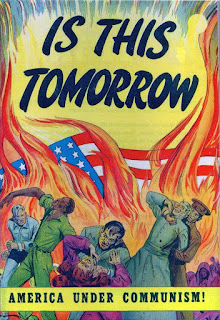Passion + Struggle | Go Tell It On The Mountain |
Guten Tag~
 The novel Go Tell It On The Mountain by James Baldwin is describes the course of the fourteenth birthday of John Grimes in Harlem, 1935. Baldwin also uses extended flashback episodes to recount the lives of John's parents and aunt and to link this urban boy in the North to his slave grandmother in an earlier South. This is an intense, time-warping story that moves back and forth in memory over more than seventy years, peeks inside the brains of multiple characters… and still, all takes place during the course of one twenty-four hour period. Baldwin depicts the insidious effects of systemic racism, producing for us a glimpse of the inhumanity that is the second and third generation result of the era of American slavery that took place virtually from the period of colonization through the American Civil War. In Part Two, it’s learned that Gabriel's and Florence's mother was a slave, freed only by the Emancipation Proclamation and the Civil War. As a result of this proximity to slavery, the characters of the novel suffer a special set of physical, psychological, and social circumstances: Gabriel and Florence, for example, have siblings they will never know because, as property, their siblings were taken from their mother for various reasons (but all having to do with their slave — therefore, race — status and circumstances). The great migration north originally held a promise of better times and circumstances for each character, but ultimately resulted in only a different, often more oppressive, level and manifestation of the racism they were attempting to escape.
The novel Go Tell It On The Mountain by James Baldwin is describes the course of the fourteenth birthday of John Grimes in Harlem, 1935. Baldwin also uses extended flashback episodes to recount the lives of John's parents and aunt and to link this urban boy in the North to his slave grandmother in an earlier South. This is an intense, time-warping story that moves back and forth in memory over more than seventy years, peeks inside the brains of multiple characters… and still, all takes place during the course of one twenty-four hour period. Baldwin depicts the insidious effects of systemic racism, producing for us a glimpse of the inhumanity that is the second and third generation result of the era of American slavery that took place virtually from the period of colonization through the American Civil War. In Part Two, it’s learned that Gabriel's and Florence's mother was a slave, freed only by the Emancipation Proclamation and the Civil War. As a result of this proximity to slavery, the characters of the novel suffer a special set of physical, psychological, and social circumstances: Gabriel and Florence, for example, have siblings they will never know because, as property, their siblings were taken from their mother for various reasons (but all having to do with their slave — therefore, race — status and circumstances). The great migration north originally held a promise of better times and circumstances for each character, but ultimately resulted in only a different, often more oppressive, level and manifestation of the racism they were attempting to escape.
The novel gives a rich history of social movements shaped progressive thought throughout the twentieth. As progressivism as a reform tradition has always focused its moral energy against societal injustice, corruption, and inequality. Progressivism was built on a vibrant grassroots foundation, from the Social Gospel and labor movements to women’s suffrage and civil rights to environmentalism, anti-war activism, and gay rights. Since the setting is Harlem in 1935, and it’s a very violent place as the protagonist’s brother Roy was stabbed and his father Gabriel blames this on white people but his mother and aunt state that it was his own foolishness. Then, John, the main character was sent to get himself a birthday present, going into a town that mostly occupied by Caucasians, he questioned began whether living amongst white people if they’d give him the respect and care his father fails to give. Although this character never enters a store from around there. Baldwin was able to intersect the realism of social politics of the period of time during this story, as he was able to show that there were serious problems within the world as he expressed this through his character’s stories.
The novel tells movements to obtain civil rights for black Americans have had special historical significance. When issues of great magnitude for or against one population to the advantage or detriment of another population — especially when the outcome is to subordinate one group to another — are given a rationale in defense of their existence, that rationale, usually steeped in arrogance and insensitivity on the part of its proponents, establishes and propagates irrational delusions of righteousness and natural superiority coupled with false standards of value and ethics in both the superordinate and subordinate populations. These "delusions" of superiority are, in subsequent generations, generally accepted as moral or ethical truths. This told expressed movements for equality and individual rights and movements for justice.
Thanks for reading >< Always Aya
578 words


Comments
Post a Comment